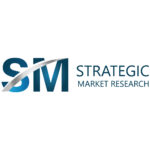Table of Contents
The medical procedure known as apheresis is use to purify blood or separate its many constituent parts. Blood is taken from the donor or patients and collect into a device that separates the require component from the blood. While returning the remaining blood to the donor or patients.
The market worth of the apheresis market in 2021 was USD 1.79 billion and will reach USD 3.87 billion by 2030 at a 7.78% CAGR During 20212-2030.
The American Society for Apheresis estimates that apheresis can be utilize as a supportive treatment for over 87 different disorders. As of January 21, 2021, there were around 47 clinical trials involving apheresis for different hematological illnesses nationwide. According to the U.S. National Library of Medicine.
The market is anticipated to benefit from the increase of platelet donors and R&D expenditures by biopharmaceutical companies. Around one in every 5,000 male births is affected by haemophilia A, according to the Centers for Disease Control and Prevention. Every year, 400 infants are born with haemophilia.
Market Dynamics
There will be opportunities in the commercial market due to the increasing incidence of diseases. The volume of trauma and injury cases. The rising demand from biopharmaceutical companies for source plasma, and the attractive reimbursement scenario for apheresis. Untap developing nations provide this sector with fresh growth prospects.
Drivers
The market will grow as a result of factors including an increase in diseases. A rise in the need for blood components and safety, technological advancements in the creation of new apheresis techniques. An increase in funding and reimbursement policies for apheresis procedures.
The worldwide apheresis equipment market would increase primarily due to new launches. Rising blood transfusion demand, and rising prevalence of chronic and acute disorders.
Additionally, the market is growing due to the rising prevalence of blood-relate illnesses and technological developments in equipment. Additionally, the enhance automation of apheresis equipment has shorten treatment times and facilitate associate operations. Which will fuel market expansion throughout the project period.
Restraints
The growth of the apheresis industry is hampere by a lack of understanding of the therapies carry out with perfusion systems and post-health problems such as graft rejection, regenerative diseases, and metastases.
Opportunities
Therapeutic plasma exchange and immunoadsorption are two examples of apheresis techniques that can treat multiple sclerosis relapses. Thus, the market players can anticipate lucrative growth possibilities due to the rising prevalence of MS. For instance, according to research publish in the journal Neurology in February 2019, there were 913,925 adults with MS in 2017. The frequency of the disease was 362 cases per 100,000.
The need for apheresis equipment is rising as a result of the rising complexity of surgical procedures and the rising demand for various blood components. The American National Red Cross estimates that the United States needs about 29,000 units of RBCs every day. Every year, over 16 million blood components are transfused. The risk associated with apheresis equipment, in addition to a scarcity of donors and histocompatibility, are restricting the market’s growth.
Market Segmentation
On the basis of product, the market for apheresis market is segment into apheresis devices, disposables and reagents, and software.
The disposables and reagents held the maximum market position in 2020. Additionally, the centrifugal apheresis devices segment will grow at the quickest CAGR throughout the forecast period. Due to the advantages of centrifugation and its effectiveness in separating all types of blood components, the market for centrifugal apheresis machines is expanding.
On the basis of application, the market for apheresis is segment into erythocytapheresis, plasmapheresis, leukapheresis, photopheresis, plateletpheresis, and others.
In 2020, plasmapheresis contribute to over 50.0% of the market, holding the biggest market share. Grifols develope plasmapheresis in 1951 as a method to separate plasma from blood cells. Major growth drivers for this market segment are the increasing rate of blood-related diseases and the rising need for medicines generate from plasma.
On the basis of end-user, the market is segmente into hospitals and transfusion centers, blood collection centers and blood component providers, and others.
Blood collection centers and blood component suppliers held the largest market share of 67.5 % of the global market in 2020. This is because there are more blood centers, more instruments for testing blood components, and more people are aware of blood collection facilities.
Regionally, the market is studie across Europe, North America, Asia Pacific, and LAMEA.
North America held the largest regional market. The key factors driving the market’s growth in North America are the rising incidence of blood-related illnesses. Such as kidney disease, cancer, and neurological disorders, as well as the availability of develope healthcare infrastructure and high patient awareness levels. A 2019 study by the Centers for Disease Control and Prevention (CDC) found that 37 million (15%) Americans have the chronic renal disease (CKD).
Additionally, Europe will grow at a robust 6.39% CAGR during the projection period.
Key Players in Apheresis Market
• Asahi Kasei Medical
• Cerus Corporation
• Kawasumi Laboratories
• Kaneka Corporation
• Nikkiso
• Terumo BCT
• Fresenius Kabi
• Kaemonetics Corporation
• B. Braun Melsungen AG
• HemaCare Corporation
Apheresis market in 2021 was USD 1.79 billion and will reach USD 3.87 billion by 2030 at 7.78% CAGR During 20212-2030. One of the main factors driving the market’s expansion is the rise in the incidence of chronic diseases. The rise in the number of exceedingly complex surgeries, and the rising demand for platelets and plasma.

